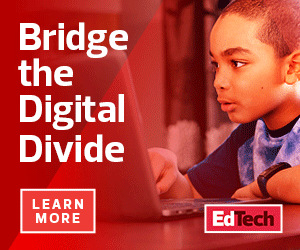Dynamics of digital instruction, learning outcomes and equitable access can be complex, with no one-size-fits-all approach. As researchers learn more about best practices, educators are tasked with putting their findings into practice — a job harder than it sounds. Now, districts are confronting new challenges around equity and screen time as they seek to deliver remote instruction.
We asked Kathy Hirsh-Pasek, a senior fellow at the Brookings Institution and a faculty fellow in psychology at Temple University, to share her views on screen time.
This interview is part of a roundtable on how researchers and educators view screen time, digital equity and learning outcomes.
EDTECH: Research about the effects of screen time varies widely. How would you characterize this issue and the effort to balance technology in schools?
HIRSH-PASEK: When screen time is everything from homework to social media, it’s hard to sort out what people are really talking about. The distractions in some age ranges are going to be different than in others, and not taking that into account makes it tough.
That said, we’ve gotten some handle on use patterns. We clearly are at a point where everything’s been revolutionized by this new thing that’s come into our schools and our homes. We’re learning as fast as we can.
The problem is that the moment you think you’ve learned something, the technology changes. That’s about to happen again with augmented and virtual reality, so it’s hard to get arms around it. This is a matter of time and figuring it out.
EDTECH: If intentionality is key to effective use of educational technology, how can educators apply this in practice?
HIRSH-PASEK: The question is not as much about the gadget and gizmo as it is about what’s the best way to teach. These things offer tremendous opportunities, but at the same time we have to understand that teaching evolved for a reason, and I mean “evolved.” It’s been around forever. We all know the story of Socrates. We all know that in ancient Rome and ancient Greece, we had great teachers. Why were they so important, even in biblical times? Because humans relate to other humans.
Teaching is a relationship between two people. Finding the balance between the amount of information given, its delivery system, and relationships that support learning is the name of the game.
Our job is to figure out what works well and what does not. Active, engaged, meaningful and socially interactive learning is good. Passive, distracting, not meaningful and solo make something worse. Now we can create a profile and judge it along these criteria, along with how well it meets its prospective learning goal.
EDTECH: Some educators have concerns about potential negative effects of screen time. Are these concerns legitimate?
HIRSH-PASEK: My sense from watching kids in front of technology is yes. They’re like glue.
Personally, I’m a chocoholic, and I’m not giving up my chocolate. In the same way, kids shouldn’t give up their screens. But you negotiate when they’re going to be on it and when they’re going to be off it, and we abscond our responsibility when we don’t regulate.
Let’s take the analogy of dessert. Our kids love dessert. Dessert is addicting. Would we let our kids have chocolate cake for dinner? No. The best thing to do is to understand that nothing is an absolute in the world, and certainly nothing is an absolute with young children. Nobody minds if you have chocolate cake after dinner, but let’s make sure you have the right food first.
EDTECH: Future careers will require students to be tech-savvy, but they’ll also need effective interpersonal skills. Are these aims contradictory, and how can educators address both?
HIRSH-PASEK: Even to be good learners, people have to be social. We learn through each other. A lot of people have come up with “social-emotional versus the learning” — no. They’re intimately linked in the latest science. You can’t have one without the other.
CEOs say that the most important skills employees need are critical thinking, communication, collaboration — almost all things that involve other human beings. They’re just not separate anymore.
EDTECH: How do you frame the relationship between technology and equity?
HIRSH-PASEK: Everyone needs to have connectivity right now. That matters, and the kids who don’t have any are going to be left in the dust. We know that kids from under-resourced environments have fewer books in their home. Does it make a difference? Of course. We have to offer our children a full palette of what it means to be educated in the 21st century — and that means every kid.
READ MORE: Learn how to create an equitable digital culture in K–12 schools.
EDTECH: Given that our understanding of access and equity issues will continue to evolve, how can schools best approach this complex issue?
HIRSH-PASEK: Science is progressive, and the same thing is true for scientists who study learning. We’re trying to find out how to best use these tools so we can help all kids become active, engaged, meaningful and socially interactive learners. When we do that and we set goals and we help teachers see that it’s not about whether it’s projected on a whiteboard or a blackboard, we’re going to be much better off.
This isn’t about “Is screen time bad or good?” It’s about how you use it. It’s like with any other tool. It would sound ridiculous for me to say to you, “Is a screwdriver bad or good?” If you use it as a weapon, it’s bad. If you use it to get a screw out of a wall, it’s great.












